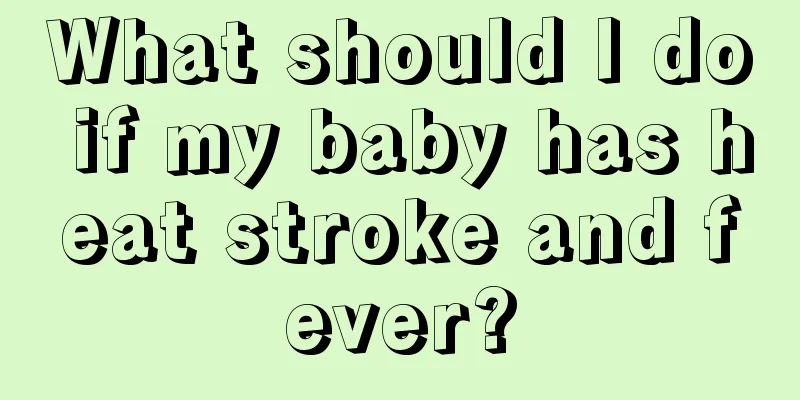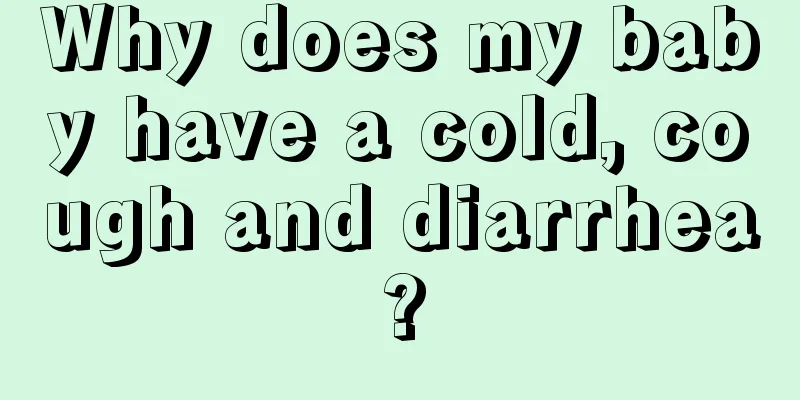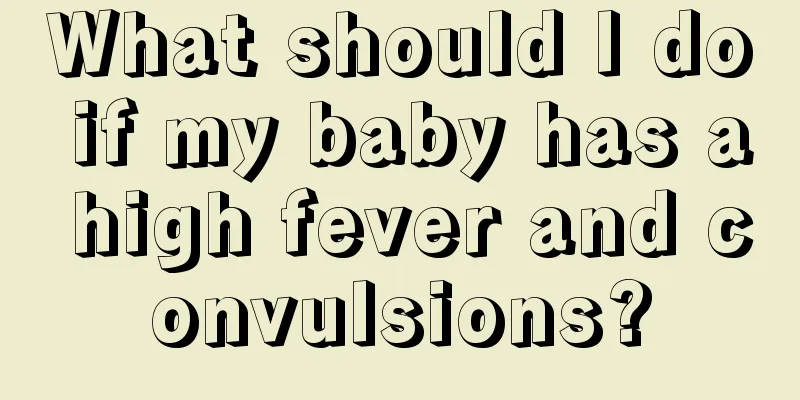What should I do if my baby has heat stroke and fever?

|
Since babies have relatively poor immunity, they are very susceptible to adverse environmental influences, which can cause some diseases. Heatstroke and fever in babies is a common condition. When this disease occurs, the baby will have some symptoms such as dizziness and fever, and it is necessary to take timely measures to deal with it. So let's introduce what to do if your baby has heat stroke and fever?
1. Premonitions of heatstroke: headache, dizziness, tinnitus, dizziness, thirst, palpitations, normal or slightly elevated body temperature, which can be recovered by a short rest in a high temperature environment. 2. Mild heatstroke: In addition to the above symptoms, the body temperature is above 38°C, the face turns flushed to pale, there is sweating, the skin is clammy, the blood pressure drops, and the pulse speeds up. The baby can return to normal after rest. 3. Severe heatstroke: also known as heat exhaustion, manifested by: cold skin; excessive sweating; nausea and vomiting; dilated pupils; abdominal or limb cramps; rapid pulse; often accompanied by fainting, coma, high fever and even loss of consciousness. If the fever is really caused by heatstroke, you must go to the hospital to receive large amounts of intravenous fluids to replenish the body's lost water, and then cooperate with some relevant examinations to see if there is any internal organ damage caused by heatstroke. Only then can you rest assured. If you leave the child at home, it will be very bad for the child to be in this condition and not to replenish water in time. It will affect subsequent recovery.
1. Change into clean clothes Immediately move your baby to a ventilated, cool, dry place, let your baby lie on his back, unbutton his clothes, and take off or loosen his clothes. The baby's clothes are soaked with sweat, so you should change the baby into clean clothes in time to prevent the baby from vomiting again due to the smell of dirty clothes. At the same time, turn on the fan or air conditioner to dissipate heat as quickly as possible, but do not blow the wind directly on the baby. 2. Ice If a child at home shows symptoms of heatstroke and fever, parents should not panic too much. When the child's fever is not particularly serious, you can wet a towel in cold water, wring it out properly, and then fold the towel and place it on the child's forehead. Repeat this cycle of exchanging towels. If the child's fever is serious, you can wrap an ice pack in a towel and place it under the child's head or legs to cool the child down.
When a child has a high fever, parents can choose to wipe their body with alcohol. Dilute the alcohol, take off the child's clothes, dip a towel into the diluted alcohol, and repeatedly wipe the child's legs, neck, armpits and other places; the movement should be gentle, so that the evaporation of alcohol can disperse the heat in the child's body, thereby achieving the effect of quickly lowering the body temperature. However, it should be noted that the child's chest and abdomen should not be wiped. |
<<: What should I do if my baby has a fever of 39.3 degrees?
>>: What should I do if my baby is frightened and has a fever?
Recommend
What to do if your six-month-old baby has diarrhea
Baby diarrhea is a very common disease in pediatr...
What to do if your baby is stuck by a fish bone
Fish is a very common delicacy on our table. In t...
How to educate children to curse
Parents are the first and best teachers of their ...
What to do if your two-month-old baby falls off the bed
It is very common for babies to fall off the bed ...
What should I do if my child has poor resistance?
Children have weaker health and are always catchi...
What to do if your child is bad tempered and cries
If your child always has a bad temper and likes t...
What to do if a child has an itchy throat and coughs
One of the things parents worry about most about ...
What foods can supplement iron for children?
Iron plays a vital role in maintaining human heal...
The best treatment for ADHD
Most cases of ADHD occur in children. ADHD can be...
What should I do if my one-year-old baby has poor digestion?
The stomachs of babies are relatively sensitive, ...
How many teeth does a 9 month old baby have?
Many babies begin to grow teeth when they are six...
Be careful with snoring in children, as the incidence rate is highest at this stage
Snoring in children is very serious. Among every ...
3 major hazards caused by baby powder
Some mothers, after bathing their babies, will ap...
What is the recipe for a 20-month-old baby?
When the baby is 20 months old, the diet must be ...
How much milk does a four-month-old baby need in a day?
For babies, diet means drinking milk, and the amo...









